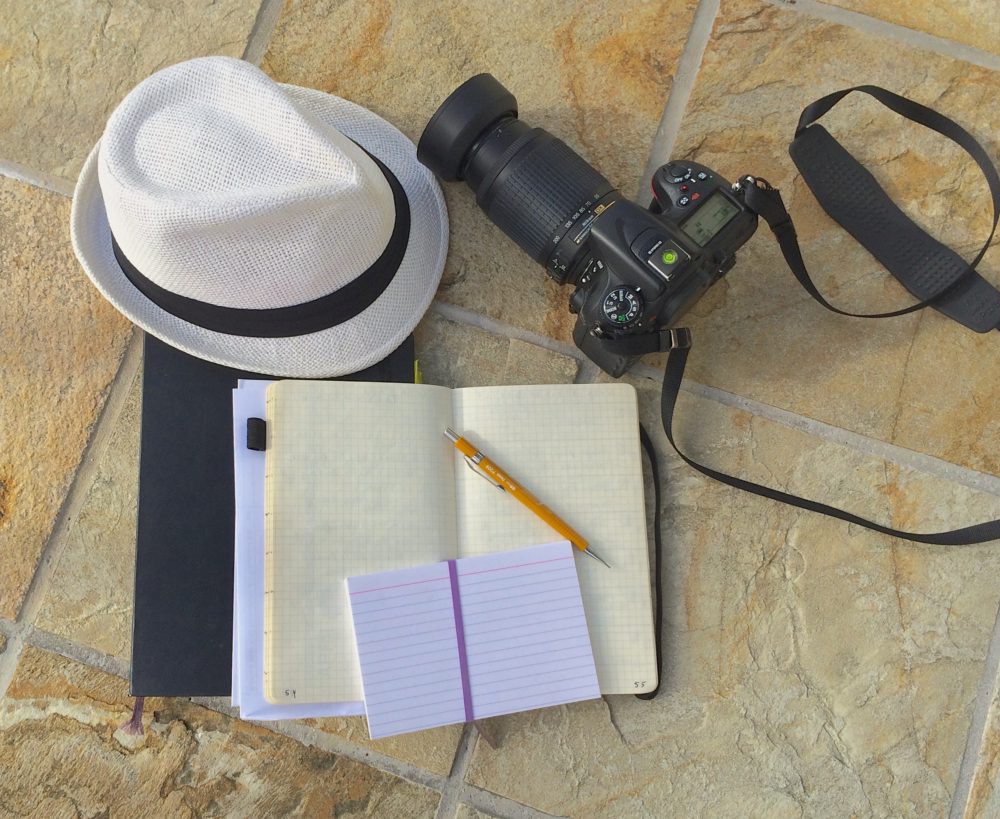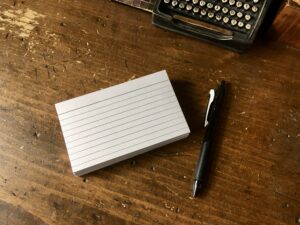One of the most searched questions per the website Answer the Public is ‘How to write a book?’
I was one of those searchers for years. And while I could find checklists and articles that broke down writing a book into small tasks. I often ran into trouble implementing a checklist because I didn’t have the tools to assist with tasks such as creating character sheets, organizing my research notes, and tracking my word counts. Let alone wrapping my brain around all the little things that go into crafting a manuscript.
A task list without explanation or mentioning tools to help you accomplish the task is not particularly helpful. The two truths about writing a book are these: You have to actually have to write or dictate the words, and there is no one way to write a book. A large part of the difficulty of writing your first book is learning what works for you and continuing to tweak your methods until you arrive at your formula/checklist for creating a book.
Just as artists copy the work of master artists when learning their craft, copying other people’s methods will allow you to find what works best for you. The most exciting thing about trying different approaches is if it doesn’t work for you, you are free to try another method. Keep what you need/works for you and let the rest of it go.
If I were to go back to when I first started writing a book, what tools would I have wanted to know about? I am a natural short story writer, it was and still is my favorite form of writing, and it took a lot of study to figure out how to expand my stories into novel-length fiction.
This first post of my revamped blog is my list of tools/apps that have helped me organize my thoughts and write.
My biggest issue with how to write a novel is its inherently linear nature of outlines and many folks’ insistence that you need one to write a book. Newsflash: Many famous and well-respected writers do not use outlines. My brain does not work that way. My thoughts spiderweb out from a book idea. Scenes come to me out of order, characters I never planned show up halfway through a book, my characters go off script, and my short story becomes a novella, becomes a novel. How to wrangle all of those changes/possibilities/issues? Before we move through this series and get to the actual “how to write a book” part, here is a list of tools that have been helpful with the nuts and bolts of writing. Some of these tools are free, and some are paid. Most have a free trial that you can use to take advantage of to see if it will work for you. I advise always trying to free a long while before you spend cash for a program. {*Disclaimer: Some of the links below are affiliate links and I receive a small commission if you purchase through them. It does not increase your cost but helps defray blog expenses.}
- Pomodoro App( https://apps.apple.com/us/app/be-focused-focus-timer/id973130201) to keep your butt in the chair and working for set periods. The key to getting any writing done is to keep your butt in the chair and do the work. That can seem daunting some days. A Pomodoro timer keeps you on track with short bursts of work followed by rest periods. Here is a link to a lengthy explanation of why it works. (https://todoist.com/productivity-methods/pomodoro-technique )
- Mind Node Mind Mapping App (https://www.mindnode.com) This app lets you work outwards from your central idea and link them together. I use it mostly for nonfiction articles and blog posts, but I know folks who also use it for fiction. If you are a non-linear thinker, it is magic to be able to add ideas as they come to you and then link them together. Here is a longer explanation of Mind Mapping (https://www.adelaide.edu.au/writingcentre/sites/default/files/docs/learningguide-mindmapping.pdf )
- Scrivner (https://www.literatureandlatte.com/scrivener/overview) this the word processing tool that made a massive difference in my productivity and the ability to keep track of all the things that go into writing a book in one place. No more crashing my computer because I had too many windows open or losing my place while I cut and pasted trying to rearrange my manuscript and, at last, a way to keep track of word counts so I could stay on target to have completed a manuscript. Literature and Latte offers an actual thirty-day trial period, so you really try it out to see if it will work for you. The trial period allows you thirty days of use, not just the calendar period. It does have a learning curve which is where the following recommendation comes in to play.
- To go along with trying Scrivner, check out this free Learn Scrivner Fast webinar with Joseph Micheal. Learn Scrivner Fast was one of the best investments in my writing career. It is a tool that lets you create the way you think, loose enough that you can bend them to your will. It is flexible enough to capture your thoughts on the fly, hold your research notes, and yet organized enough to keep you on track so you can finish your project. My book production doubled after using Scrivner because I spent way less time trying to organize myself to write. I could open my document, secure in the knowledge that everything I needed to write my book, such as character worksheets, setting worksheets, images, notes, and visual organizers, was there waiting for me to start creating. Disclaimer here: There is a learning curve; it is not intuitive and does not work for everyone. But for me, with my distraction and organization issues, it is perfect. I suggest you download the free Scrivner trial and follow along during Joseph’s free webinar. You will learn enough to use Scrivner and will be able to try it out to see if it will work for you. The next free webinar is December 15th at 4 pm EST, and you can sign up here: (https://murphy.krtra.com/t/p5c2PVxq3tYf) If the time does not work for you, if you register, there will be a replay link sent out to you.
- Grammarly (https://app.grammarly.com/apps) If you are writing short fiction or articles within the 100 to the 5000-word range, Grammarly is a game-changer for editing your work. It has a more straightforward interface than ProWriting Aid, and I like that simplicity. There are free and paid versions. I advise always trying to free a long while before you spend cash for a program.
- A pack of index cards. A simple but effective way to organize your thoughts when you need to step away from screens. Why not a notebook? Because you can rearrange your thoughts easily. Don’t get me wrong, I love notebooks and keep my half-ass version of a bullet journal in one, but as I said, when ideas for a story hit, they come willy-nilly. Index cards are a cheap way to sort things. One rule for using Index cards is to write one thought/idea/scene per card, or sorting them later will be frustrating.
- Pinterest Account (https://www.pinterest.com) Need to find images to represent your characters? Need to research a setting or occupation? As a visual search engine, Pinterest is a writer’s goldmine. It’s free and a great place to keep mood boards and images for your work. When I’m brainstorming a book, that is one of the first places to search if I need photos of characters/places/weapons/furniture/houses/etc. I drag the images to Scrivner later so that when I’m writing, they are at hand, and I don’t use up my writing time researching. Your boards can be made private, and I recommend doing that when working on a book for several reasons.
- Timer: I mentioned the Pomodoro app above, but this timer is my favorite because it frees me from screens. I can lock my phone away and work without the distraction of it. This one is fun and easy to use. Just turn it to the length of time you need. Hexagon Rotating Productivity Timer with Clock, Pomodoro Timer with 5,15, 30, 45, 60 Minute Presets, Timer for ADHD Kids and Adults (Orange) by Znewtech ( https://www.amazon.com/Hexagon-Rotating-Minute-Preset-Countdown/dp/B07L2QN8MY
Long post but one that I hope helps you on your way to finding tools to corral your thoughts, get organized and get to writing. I’m looking forward to the next post in the series: Begin at the Beginning, or Not.

